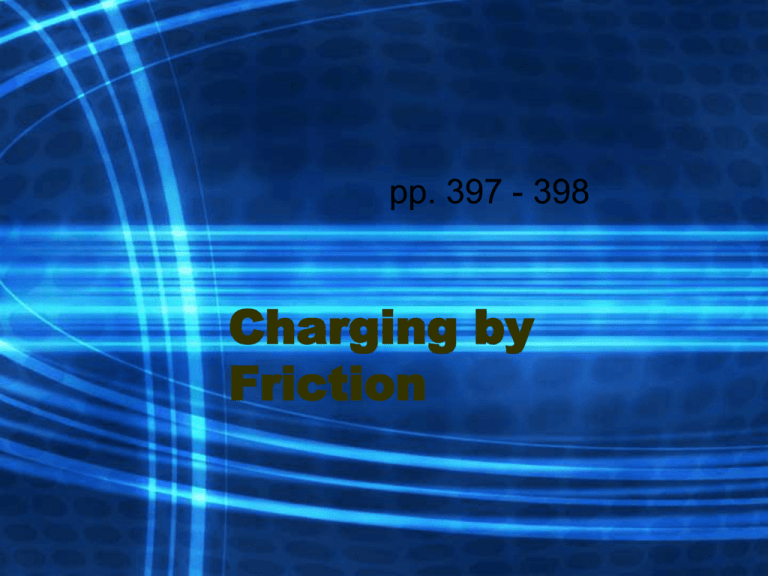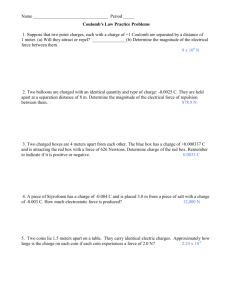Friction
advertisement

pp. 397 - 398 Charging by Friction Learning Goals • Be able to use the electrostatic series to predict the charges of objects rubbed together • Be able to draw diagrams showing electron movement when charging by friction Friction • Friction is the force resisting the relative motion of two surfaces in contact. • The force of friction can remove electrons from one object and cause them to transfer to the other object. Friction • As one object loses electrons, the other object gains them. • The total number electrons remains the same, they are transferred from one surface to another. • Positive Charges do not move. • For any charging procedure, it’s important to keep in mind that new electric charges are not being created. • The electrons in each object are just being rearranged within the object or transferred to another object. Electron Affinity • Different substances have different abilities to hold on to electrons. • The tendency of a substance to hold on to the electrons is called electron affinity. Electron Affinity • This table lists a series of selected materials in order of their electron affinity. • The higher the material is in the list, the greater the tendency for that material to lose electrons. Electron Affinity • This allows one to determine what charge a material will have if it is rubbed against another material on the table. • Of the two objects being rubbed together, the one higher on the series will become positive and the one lower will become negative Learning Goals • Be able to use the electrostatic series to predict the charges of objects rubbed together • Be able to draw diagrams showing electron movement when charging by friction Homework • Read pp. 397 - 398 • Answer the following questions: – p. 398 # 3, 4, 5 – p. 403 # 10, 11 – Worksheets





